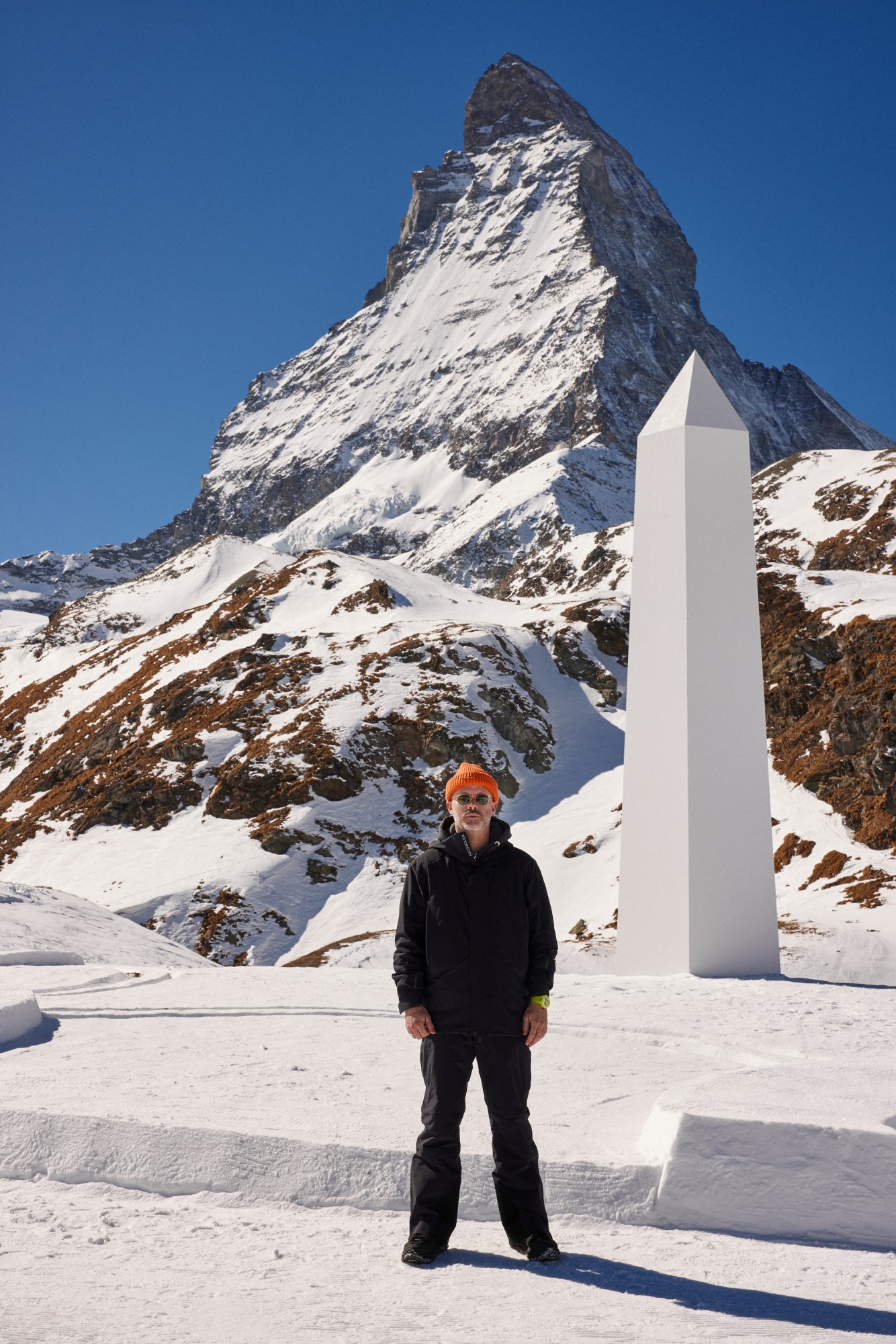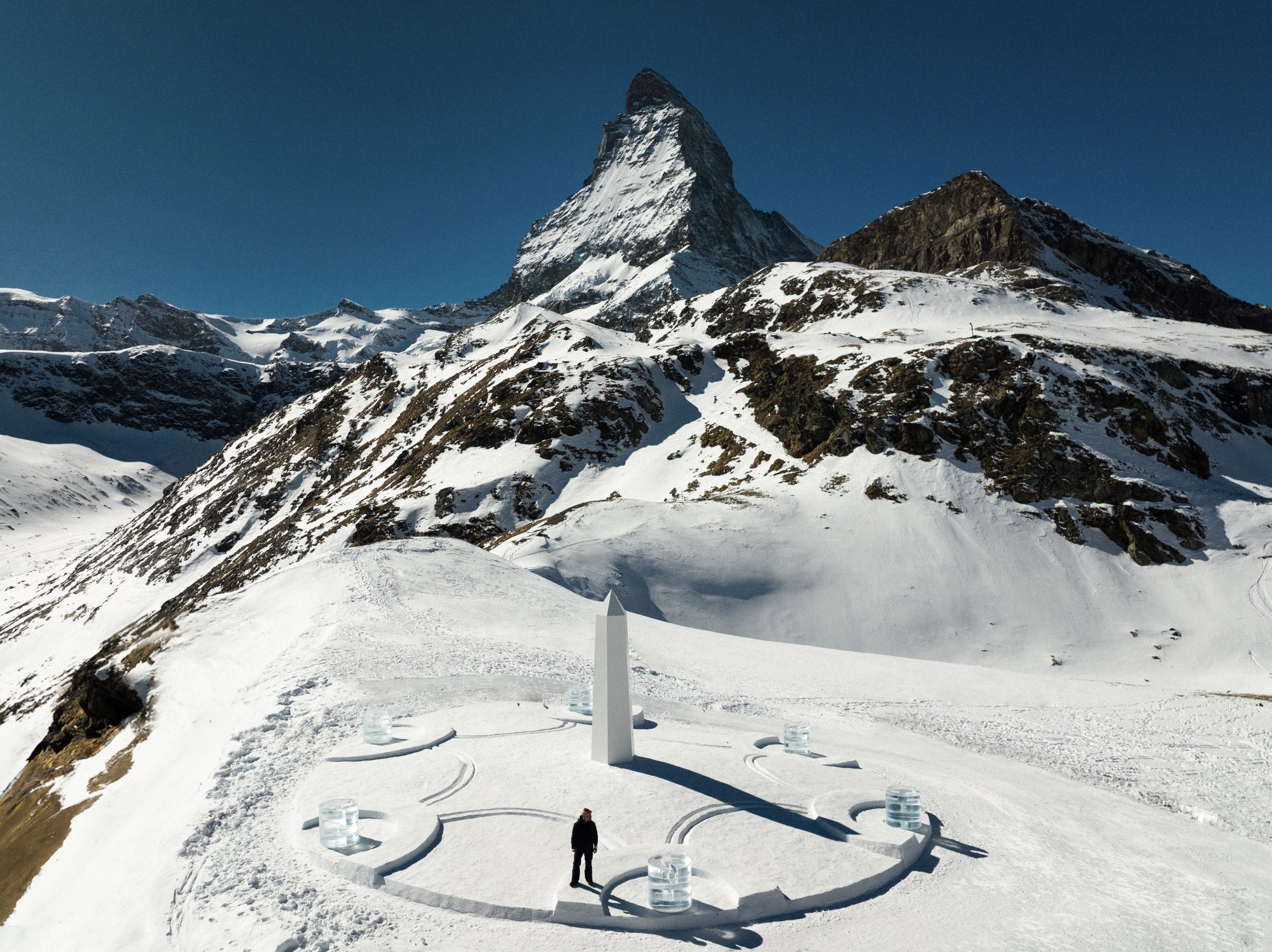Swiss watchmakers Hublot and American contemporary artist Daniel Arsham are a natural pairing. The former creates luxury timepieces; the latter plays with the conceptual side of time. Both decided to bring a shared passion to life. After teasing a project at Art Basel Miami in December, this week they unveiled the first part of their collaboration: a 20-metre sundial installation 2583 metres high in the Swiss Alps.
The epic quartz crystal-shaped obelisk – “Light & Time” – functions as an outdoor timekeeper for those who make it up the ski lift of the mountainous region not far from the Matterhorn. Throughout the day, the shadow cast by the structure points to the time of day in the raked snow beneath. “Physically, the temporary installation will capture something of how fleeting time can feel,” Daniel says, “but it will also be lasting, creating a memory that transcends the passing of the seconds, minutes, hours and days in all those who make the journey up the mountain to see it.”

Daniel’s sundial heavily reflects the visual language and engineering of Hublot’s watches, integrating its signature design codes and details into the epic structure. Speaking at Art Basel back in late 2022, when details around the collaboration were scant, Daniel spoke of his approach when fusing his work and a brand’s together. “I think my role, when I enter a collaboration like this, is to actually disrupt a little bit. My work can be precise and technical, but it’s often about a kind of experimentation and breaking and disruption. So I’m looking at ways both to push the material technicality.”
The artist had recently visited the brand’s headquarters in Geneva and, enthralled by both the level of craftsmanship and tradition involved in making the watches, as well as the emphasis on future innovation, he spoke effusively about the possibilities. “I’m a sculptor, so materials and the way of working with things is important to my own practice,” he says. “And the level of technicality and experimentation with the materials that are present in a factory is quite unusual. There’s an aspect of it that’s very technical and precise in this kind of miniature universe. But one of the amazing things was there’s a whole section of it that’s about experiment… like new material research and experimentation.”

When conceiving his first artwork, Daniel and his team began looking at timekeeping “as a human obsession, in a way”. Continuing: “Time is so related to the things that I make in my own work. This interest in archaeology, a lot of my work deals with contemporary objects as if they are being viewed in the future, like a kind of fictional archaeology. And I think that in our daily lives, the way that we interpret time and where we sit within it has so much of an effect on how we interpret culture, and, basically, how we live. And so, engaging with a company and a brand that has that as its core ethos is helpful.”
And as for whether Daniel is always on time, the answer is yes. “My grandfather had an obsession about this. He always told me, ‘On time is 10 minutes early’.”
Credits
All images courtesy Hublot
